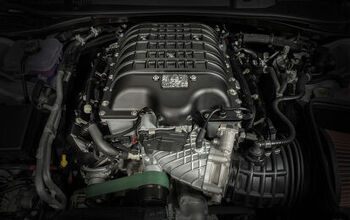For the First Time in 2017, September Auto Sales May Have Increased, Slightly, Perhaps
Both Edmunds and Kelley Blue Book are forecasting marginal year-over-year sales increases for the U.S. auto industry in September 2017.
If the analysts prove correct, it will be the industry’s first month of growth since December of last year. What’ll it take to push the industry beyond the 1.43 million new vehicles sold in September 2016?
The big gains from General Motors and Toyota will have to be big enough to overcome big losses from Fiat Chrysler Automobiles and Hyundai-Kia.
Edmunds is anticipating automaker sales reports, set to be delivered October 3, to reveal a modest overall gain of just 0.4 percent — a gain of only 5,000 sales compared with September 2016. Despite forecasted losses racked up at FCA, Hyundai-Kia, and Nissan totalling 47,000 fewer sales in September 2017 than in the same period one year earlier, Edmunds believes one extra selling day, the post-Harvey replacement bubble, and big advances by General Motors, Toyota Motor Corp., and the Volkswagen Group will counteract declines elsewhere. Edmunds predicts the Ford Motor Company will be outsold by Toyota and Lexus in September for a third consecutive month.
Kelley Blue Book, meanwhile, predicts a slightly greater uptick in overall sales — a 0.7-percent rise worth nearly 10,000 extra sales. Like Edmunds, KBB anticipates the most meaningful gains — at GM and Toyota — to overcome the big losses at FCA, Nissan, and Hyundai-Kia. KBB says compact crossover market share will rise by more than half a percentage point, year-over-year, to more than 17 percent while full-size pickup truck growth will be more than three times stronger than that of the industry overall.
Throughout the first two-thirds of 2017, U.S. auto sales dropped consistently, resulting in a January-August period in which total volume fell below 2016’s pace by 3 percent, a loss of more than 300,000 sales. Of course, auto sales remain high by historical standards. A 3-percent drop compared with 2016 — the highest-volume year on record — would still result in a third consecutive year with more than 17 million sales, a stunning achievement after the industry averaged 15.3 million annual sales over the previous 15 years.
It’s taking work to keep the sales pace so high, however. In August 2017, for example, just to keep auto sales near August 2016’s pace, the average per vehicle incentive spend jumped 13 percent, year-over-year, to $3,799 according to TrueCar. A commensurate rise in average transaction prices did not occur, with ATPs rising by less than 1 percent. The typical new vehicle buyer received a 12-percent discount off the MSRP.
Through the end of August, the Honda Civic was America’s best-selling car, the Toyota RAV4 led all SUVs/crossovers, and the Ford F-Series was America’s top-selling vehicle line overall.
[Images: Honda, Ford Motor Company]
Timothy Cain is a contributing analyst at The Truth About Cars and Autofocus.ca and the founder and former editor of GoodCarBadCar.net. Follow on Twitter @timcaincars and Instagram.
More by Timothy Cain
Latest Car Reviews
Read moreLatest Product Reviews
Read moreRecent Comments
- Jkross22 When I think about products that I buy that are of the highest quality or are of great value, I have no idea if they are made as a whole or in parts by unionized employees. As a customer, that's really all I care about. When I think about services I receive from unionized and non-unionized employees, it varies from C- to F levels of service. Will unionizing make the cars better or worse?
- Namesakeone I think it's the age old conundrum: Every company (or industry) wants every other one to pay its workers well; well-paid workers make great customers. But nobody wants to pay their own workers well; that would eat into profits. So instead of what Henry Ford (the first) did over a century ago, we will have a lot of companies copying Nike in the 1980s: third-world employees (with a few highly-paid celebrity athlete endorsers) selling overpriced products to upper-middle-class Americans (with a few urban street youths willing to literally kill for that product), until there are no more upper-middle-class Americans left.
- ToolGuy I was challenged by Tim's incisive opinion, but thankfully Jeff's multiple vanilla truisms have set me straight. Or something. 😉
- ChristianWimmer The body kit modifications ruined it for me.
- ToolGuy "I have my stance -- I won't prejudice the commentariat by sharing it."• Like Tim, I have my opinion and it is perfect and above reproach (as long as I keep it to myself). I would hate to share it with the world and risk having someone critique it. LOL.



































Comments
Join the conversation
September 2017 has 5 Saturdays, which should really help move the SAAR# coupled with strong demand in Texas and Florida for replacement vehicles. I am willing to bet that October will yield similar sales results bucking the downward trend for the previous 8 months this year, again with the gains situated in the areas most affected by recent weather events.